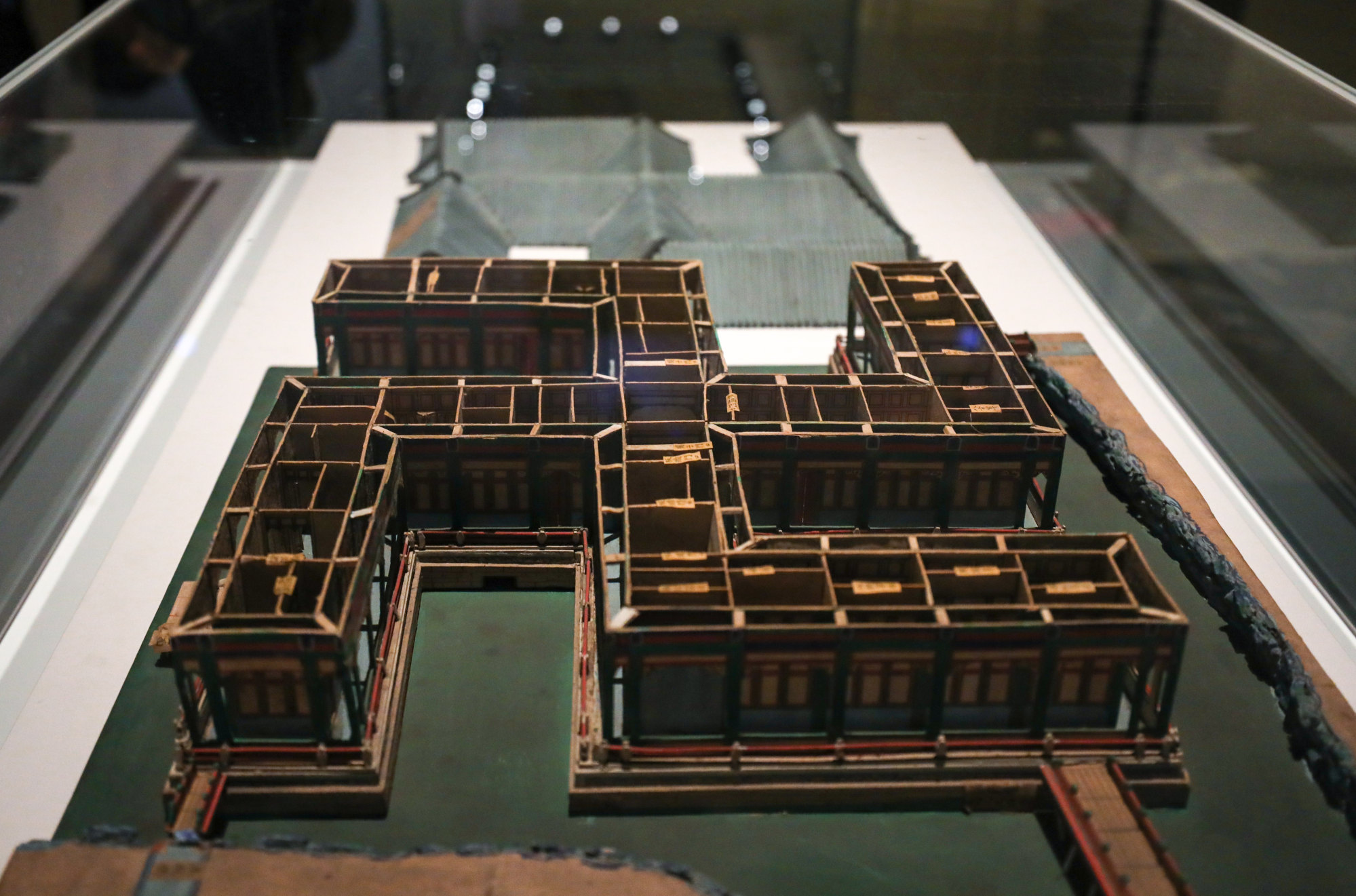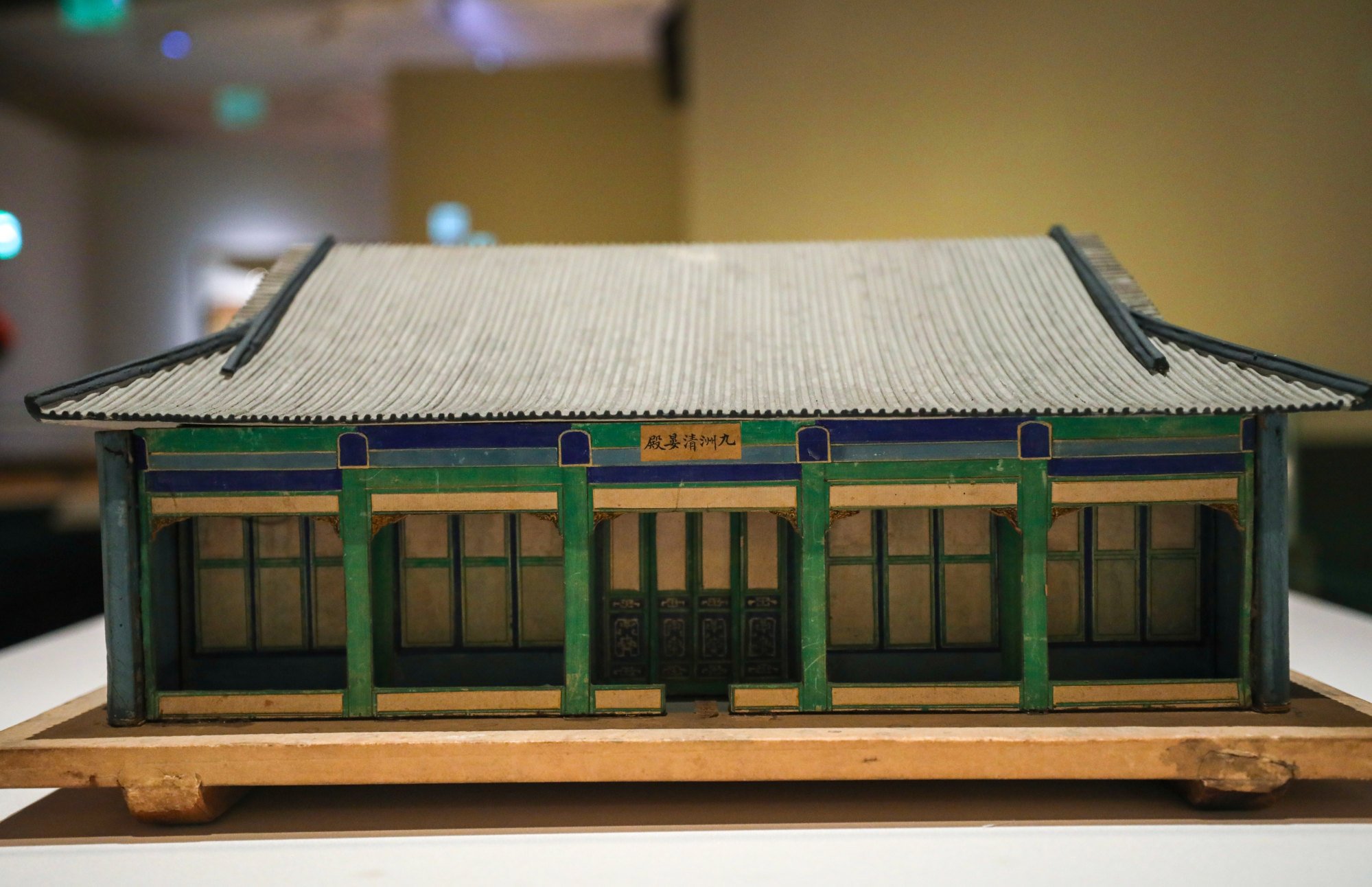
Heritage architectural models of Beijing’s Old Summer Palace structures to go on display in Hong Kong for first time
- Models to feature in new exhibition titled ‘The Hong Kong Jockey Club Series: Yuan Ming Yuan — Art and Culture of an Imperial Garden-Palace’
- Artefacts are part of the Yangshi Lei Archives, a body of architectural work recognised by Unesco, and part of nearly 200 prized relics from Beijing
Heritage architectural models recognised by a Unesco programme will be displayed in Hong Kong for the first time from Wednesday, providing a glimpse into the extravagance of the imperial residences of the Qing dynasty (1644-1911).
The models are part of about 190 prized artefacts from Beijing’s Palace Museum arriving in the city as part of a new exhibition titled “The Hong Kong Jockey Club Series: Yuan Ming Yuan — Art and Culture of an Imperial Garden-Palace”.
Produced for emperors’ approval before construction began, these 150-year-old models showed both the interior and exterior of the structure, complete with a detachable roof and labels detailing the number of rooms, measurements and directions.

“Looking at these models is like engaging in a dialogue with their designers. It gives us the perspective of emperors from ages past,” said Li Yumeng, researcher at the department of heritage architecture at the Palace Museum, adding the models helped shed light on centuries-old construction practices.
“The visual impact of a physical historical object can also enhance Hong Kong viewers’ understanding of Yuan Ming Yuan,” Li added, referring to the imperial residence that was once celebrated as the “garden of gardens” across the world but was burned down in 1860 during the second opium war by British and French troops.
Its construction required an untold cost, the highest standard of artistry and 150 years to build. The garden was said to have taken 4,000 men three days to burn down due to its scale.
Computer modelling shows Beijing’s Old Summer Palace in its former glory
The two models on display – known as tang yang in Chinese or “ironed paper models” according to the World Monuments Fund – were made primarily with paper of different types, glue and wood in about 1874.
The delicate process of creating such models gave them their name, with Li saying the ironing process was somewhat similar to pressing clothing.
“These boards were made with multiple layers of paper glued together. They would wrinkle if they were left to dry naturally, which was why heat was applied to smooth them out. Heat also helped achieve desired shapes such as the curves of the roofs,” Li said.
The models are part of the Yangshi Lei Archives, a collection of architectural work from the Lei family that served as top court architects for seven generations over two centuries. The archives are recognised by Unesco’s Memory of the World Programme, an effort to preserve the world’s documentary heritage.
The Lei clan hailed from Jiangxi province and was believed to have brought with them the know-how of southern woodwork to Beijing.

Li said Yuan Ming Yuan consisted of a range of complex and eclectic architectural styles reflecting more personalised tastes of emperors compared with the Forbidden City.
The layout of the 33-room Hall of Universal Peace resembles the character “wan”, an auspicious symbol in Buddhism, reflecting Emperor Yongzheng’s religious beliefs, according to Li.
The model for the Hall of Nine Continents in Peace was made to a 1:100 scale, and the original building marked an important and extended phase in the construction of Yuan Ming Yuan. It was an area primarily for entertainment and leisure, Li said.
Stanley Ho donation returns stolen bronze horse head to Beijing’s Old Summer Palace
There are about 80 architectural models of this kind surviving to this day. Five of them and one replica are on loan from Beijing and will be shown in two separate shows. The Hall of Universal Peace, a model of which will be on display, was said to be Emperor Yongzheng’s favourite residence.
The exhibition will run from March 20 to August 12 at the Hong Kong Palace Museum in the West Kowloon Cultural District, with full tickets priced at HK$150 (US$19) and concessionary ones at HK$75.

